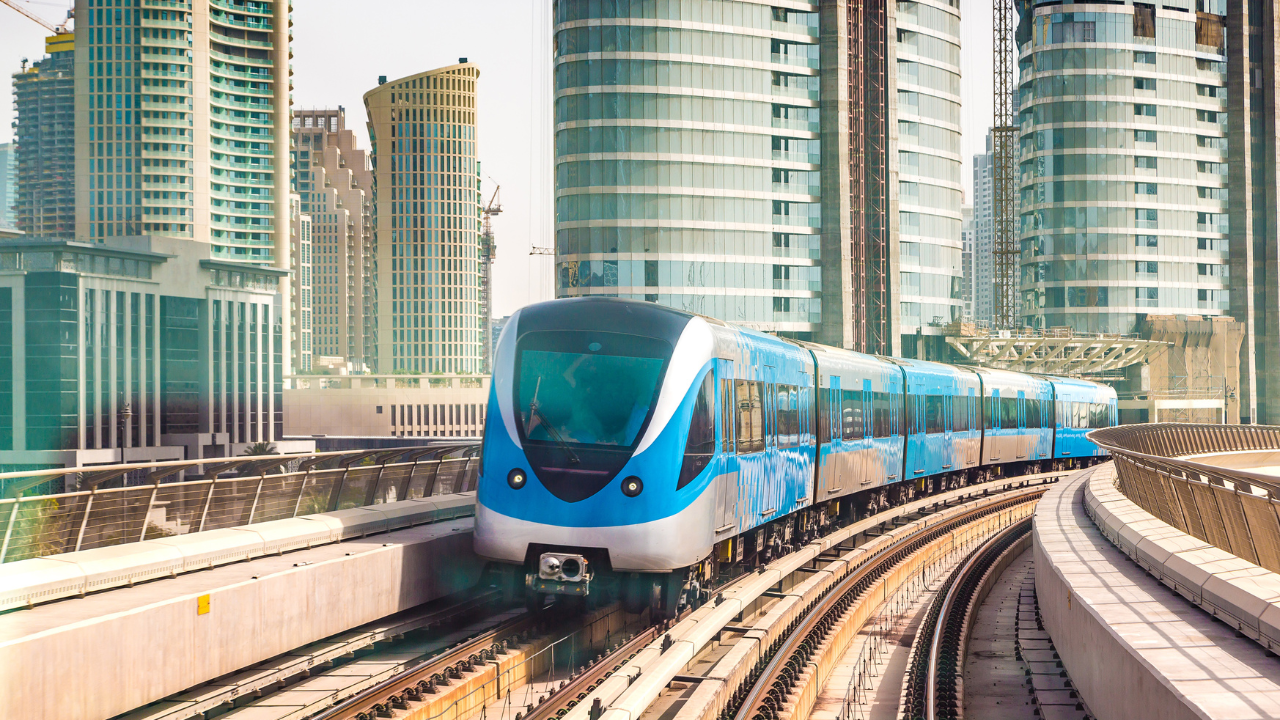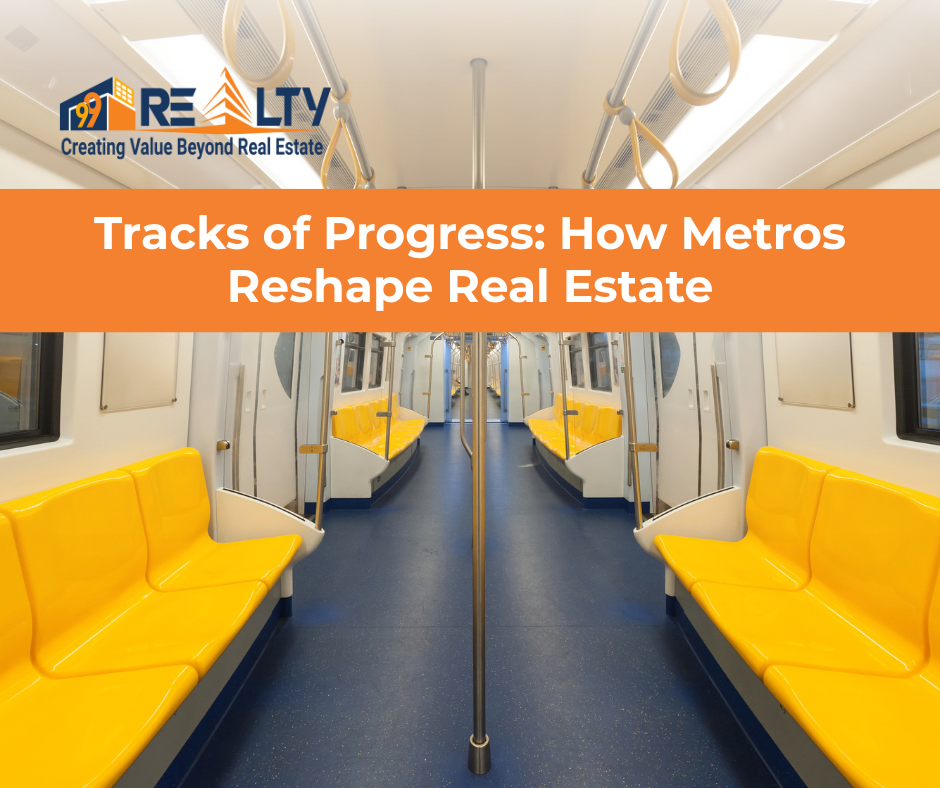Imagine buying a home on the outskirts of a bustling city, thinking you’d spend years battling traffic to get anywhere. But then—surprise!—a metro line gets built nearby, and suddenly your “faraway” home becomes a prime property. That’s the power of metro expansion in India.
Over the last two decades, metro networks have transformed Indian cities, not just by making travel easier but by reshaping the very definition of real estate value. Whether you’re a homebuyer, an investor, or simply curious about urban growth, the metro story has something for you.
Why Tier 2 and Tier 3 Cities Are the New Investment Frontiers
Why Metro Expansion Matters

A Symbol of Modern Urban Growth
The metro isn’t just about trains gliding on elevated tracks or underground tunnels. It’s a sign that a city is growing, modernizing, and preparing for the future. Think of it as an artery pumping life into areas once considered disconnected or underdeveloped.
The Metro as a Lifestyle Catalyst
Owning or renting a home near a metro station is like holding a golden ticket. Suddenly, long commutes shrink, traffic jams aren’t your problem, and reaching the office, mall, or airport feels like a breeze. Lifestyle convenience is the invisible currency boosting property values.
The Relationship Between Metro Connectivity and Real Estate
Accessibility Equals Demand
The rule of thumb in real estate is location. Metro stations add instant connectivity value, making even lesser-known neighborhoods desirable. Homebuyers love saving time, and investors love rising demand—both drive prices upward.
Mistakes Prospective Homebuyers Should Avoid
A New Definition of “Prime Location”
Earlier, “prime location” meant living in city centers. Today, a property near the metro—even if miles away from downtown—can command similar, sometimes higher, prices. The definition of accessibility has evolved.
Residential Property Trends
Affordable Housing Near Metro Lines
Affordable homes near metro stations sell faster and appreciate steadily. Middle-class families and first-time buyers see them as smart investments because they combine affordability with long-term value.
Mid-Segment Apartments and Young Buyers
Young professionals and nuclear families prefer mid-segment apartments near metro lines. Why? Because time saved on commuting means more work-life balance. Developers know this trend and often market “metro connectivity” as a major selling point.
Premium Residences and Luxury Demand
Even luxury projects cash in. High-net-worth buyers prefer apartments near metro routes, not just for convenience but also for prestige. Being “well-connected” is no longer optional—it’s a lifestyle statement.
Commercial Real Estate Opportunities
Offices Near Transit Hubs
Employers want offices where employees can reach easily. Areas near metro stations have become hotspots for corporate offices, boosting both property sales and rentals.
Retail Spaces and Footfall Boost
Think about it: a metro station guarantees thousands of daily footfalls. No wonder malls, cafes, and retail outlets flock to these zones. More people, more business.
Co-working and Start-up Ecosystems
The start-up boom in cities like Bengaluru and Gurgaon thrives near metro lines. Affordable, flexible co-working spaces near stations are magnets for entrepreneurs who rely on accessibility for clients and teams.
The Impact on Rental Yields
Tenant Preferences
Tenants—especially students, young professionals, and migrants—often prioritize metro accessibility above almost everything else. For them, saving commute time equals saving money and peace of mind.
Short-Term vs Long-Term Rentals
Short-term rentals (like Airbnb) also perform better near metro stations because tourists and business travelers prefer staying connected to the city’s hotspots. Landlords benefit with higher yields and quicker occupancy.
Rent Deposit Secrets : What You Must Know Now
Case Studies from Indian Cities
Delhi Metro
Delhi’s property prices saw a 20–30% rise in areas newly connected by metro corridors. Places like Dwarka, Noida, and Ghaziabad turned into real estate magnets.
Bengaluru Metro
The Namma Metro expansion triggered a surge in East Bengaluru property values. Areas like Whitefield, once too far for daily commuters, are now among the most sought-after.
Mumbai Metro
In a city where every minute counts, Mumbai’s metro connectivity around Andheri, Ghatkopar, and upcoming lines across Thane have already pushed residential and rental rates upward.
Hyderabad and Kolkata
Hyderabad’s metro around Hi-Tech City and Kolkata’s East-West corridor have given both cities fresh growth corridors, spreading demand beyond traditional city centers.
Urban Development Beyond Property Prices
Infrastructure Growth
Metro projects attract new roads, flyovers, street lighting, and water pipelines. It’s like a domino effect: metro first, then everything else follows.
Social and Cultural Shifts
Better connectivity encourages people to live further from workplaces, reducing city congestion. It also makes cultural hubs, theaters, and shopping districts more accessible, enriching city life.
Challenges and Risks
Construction Phase Issues
Before the benefits, come the headaches—dust, blocked roads, noise, and delays. Properties near ongoing construction sometimes lose temporary value due to these inconveniences.
Overvaluation and Speculative Bubbles
Investors often overestimate the metro’s impact, leading to artificially inflated prices. If demand doesn’t meet expectations, this bubble can burst.
Sustainability Concerns
Rapid urban development without sustainable planning can lead to overcrowding and strain on local resources, undoing some of the metro’s advantages.
Future Outlook of Metro and Real Estate in India
Tier-2 and Tier-3 Cities Joining the Map
It’s not just metro giants like Delhi or Bengaluru anymore. Cities like Nagpur, Kochi, Pune, and Lucknow are also witnessing metro-driven growth. These smaller cities could see an even sharper rise in property values since the metro brings them into the big league.
Integration with Smart City Projects
Metro expansion will merge with India’s Smart City Mission, blending transport, digital infrastructure, and eco-friendly planning. This integrated growth promises long-lasting property value appreciation.
Conclusion
The metro is more than a transport project—it’s an economic and social game-changer. From raising property values and rental yields to reshaping urban lifestyles, metro expansion is writing a new chapter in India’s real estate story.
For homebuyers, it means better choices. For investors, it signals bigger returns. And for cities, it marks a future where connectivity isn’t just about travel but about opportunity.
So the next time you hear about a new metro line, don’t just think about shorter commutes—think about the hidden real estate goldmine it could unlock.
Need Help?
Need help evaluating a property or planning your next move in the market?
Reach out to 99 REALTY – your trusted real estate partner for smarter choices.
Subscribe to get updates on our latest posts and market trends.






Join The Discussion